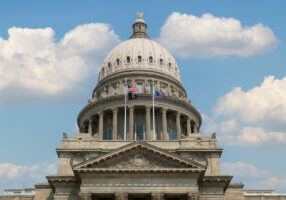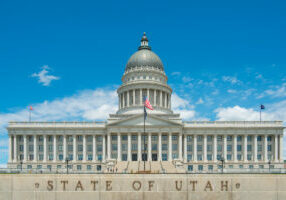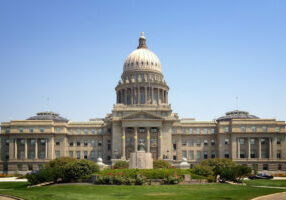The Alaska Legislature’s 2021 session commenced Tuesday and will continue for about 90 days.
The state constitution requires its 20 Senators and 40 House members to assemble in person, so conducting remote voting and debate will not be an option this year, despite the COVID-19 pandemic. They have implemented several policies to keep lawmakers safe, including mask mandates, barring reporters from the chambers, and requiring temperature checks and health questionnaires.
Legislators have yet to determine who will lead the two lawmaking bodies. Although Republicans hold a slim majority in each chamber, the Alaska Legislature’s small size makes it possible for a few lawmakers to frustrate leadership elections. As a result, legislators will likely not move any bills forward until they agree on leadership positions.
Alaska’s $1.2 Billion Problem
State officials recently projected a $1.2-billion hole in the 2023 state budget due to lost tax revenue from closed businesses, reduced tourism, and a strained public health system. Although this sum is quite large, legislators and Gov. Mike Dunleavy have ample time to find solutions, beginning this year.
To close this budget gap, Alaska will need to generate more revenue (taxes) or cut spending. Gov. Dunleavy’s preference is to spend more money in the short term to fund shovel-ready projects that could jumpstart the state’s economy. He expects the state’s economic machine to roar back, generating more revenue than it would spend on the infrastructure projects.
Several lawmakers have voiced opposition to this plan, which also calls for consideration of alternative revenue sources (new taxes). For context, between fiscal years 2015 and 2021, Alaska’s overall state spending decreased by 14%.
Responding to COVID-19
Many legislators filed bills relating to the pandemic before the session started, including legislation to limit business liability, cover COVID-related work absences as paid leave, and pay essential workers’ tuition for post-secondary education.
Alaska Permanent Fund
Legislators will likely target the Alaska Permanent Fund – the state’s $65 billion of oil revenue and interest – as a potential option for filling budget shortfalls and funding new programs.
Several have already introduced bills that, if enacted, would change the entire nature of the fund. For instance, House Joint Resolution 1 would cap how much money lawmakers could spend from the fund each year, while Senate Joint Resolution 1 would guarantee the Permanent Fund’s dividend.













